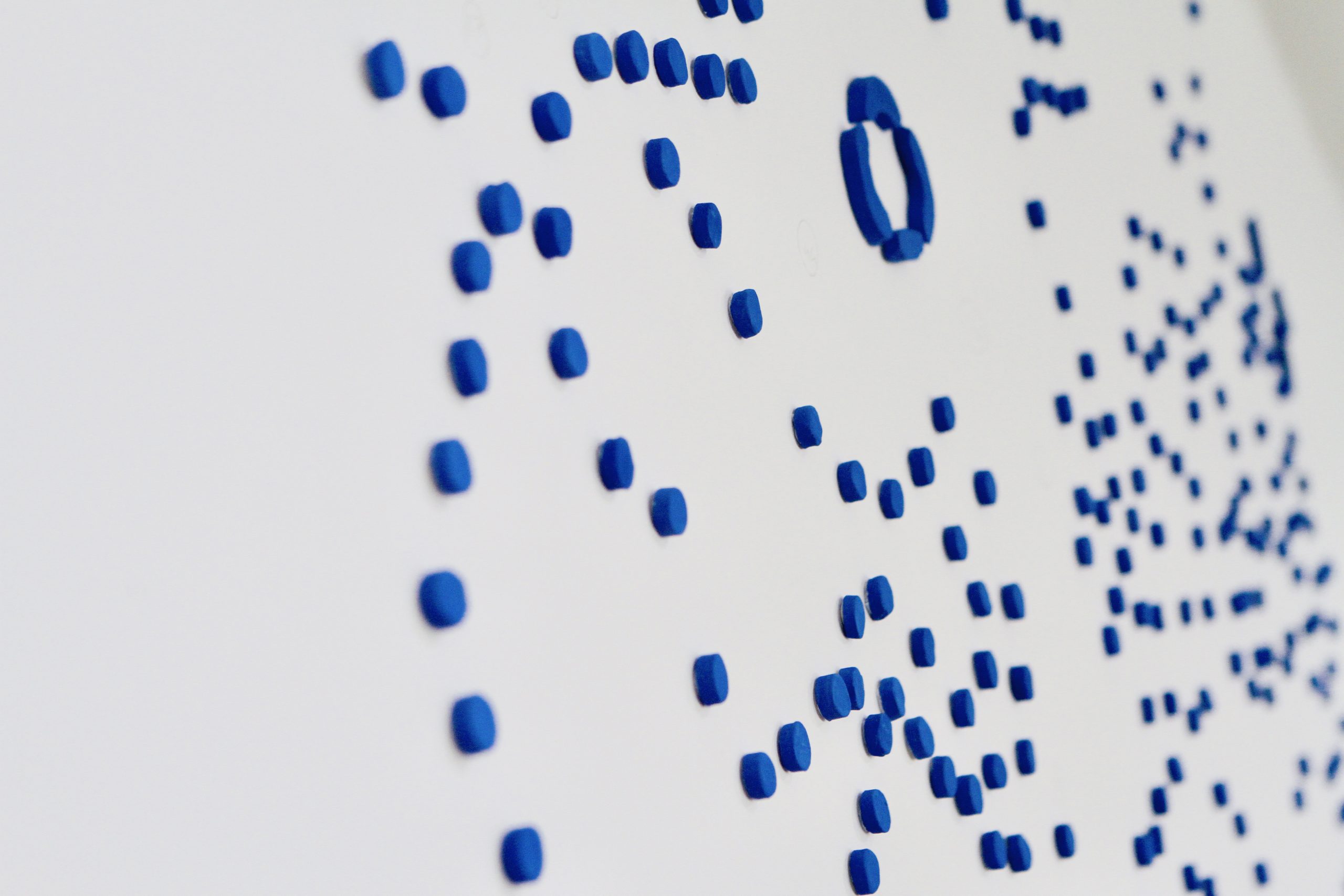
From October 29 to December 12, 2021
The opposite sea places us between waters of the Mediterranean Sea – and opens us to the contemplation of its infinite depths and movements. The sea is a space of transit and at the same time a space of conflict. It is both a gate to freedom and a frontier.
Fabrizio Contarino offers us different visions of the Sicilian Canal, a 145 km long passage that separates Sicily and Tunisia, Europe and Africa. For him stopping to observe this fragment of sea, from the Italian coast, is a recurrent exercise. This vital experience he proposes to share with us through installations where marine cartographies and wavy silkscreen coexist. The artist also uses cartographies to delve into the depths of the seabed, its mountains, its abysses and its temporalities. His gaze evokes all the paths, currents and migratory routes that have furrowed this fragment of the sea for centuries.
Through these installations, the sea is approached as an abysmal and hypnotic space, as a place that traps us in a contemplation that could be postponed to infinity. With the repetition of the same fragment of the sea, the theme of migration is approached in an emotional and poetic way, recreating the sensation of a mirage or the vertigo of finding oneself adrift.
The works in the exhibition reflect the artist’s particular way of working with images, which is divided in three stages: observation of a fragment of space, its recording and digital elaboration and, finally, its manual reworking.
In a historical moment in which we are exposed to an incessant flow of digital images, in which it seems that no image is possible any more, Contarino proposes to delve into a multiplication and repetition of images of sea fragments.
But why keep adding new images to this flow, immerse ourselves in a visual loop? The artist explores through his practice what happens when an image is trapped and functions through a digital medium and, in a next moment jumps out the screen and becomes tangible. In these games of manipulation through different devices, the artist confronts us with images full of depths, fragments of sediment in our retina, and brings us closer to the background noises that these images generate.
The potential of the exhibition does not lie in proposing a closed narrative to the spectator or in revealing something to the public, but in generating a space in which each one composes from their “sediments” and forces of imagination[1]. Repetition, overlapping and mirroring generate a wound in the legible, a wound in the hierarchical arrangement of meanings. In this way, artist makes us interact with the images, so that everyone can elaborate their multiple meanings.
Our focused, saturated, passive vision is liberated and gets lost in between the waves. Our “peripheral vision”[2] is activated, a way of seeing that does not need to dominate the object. And it is there, in the periphery of the eye, our exposure to the images that the exhibition consists of: the possibility of touching and being touched by them and our ability to continue interpreting them.
The opposite sea is an open and contradictory invitation to ask ourselves what the opposite side of the sea means? This question intends to open up our perspective on what we are seeing and how we see it, specifically in relation to the sea. And how the migratory imaginary that traverses it is generated? Is an “opposite side” of the sea possible? And, if so, how could we inhabit it?
From this complex and uncomfortable space, the artist confronts us with the possibility of breaking down prejudices and starting to elaborate together another migratory imaginary, to project another look towards the sea.
Curatorial text by Angelica Tognetti / https://www.danslesplis.com/
Richiedi informazioni sull'opera The Opposite Sea – FABRIZIO CONTARINO
